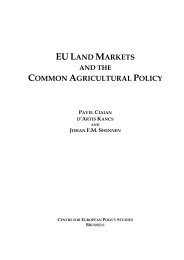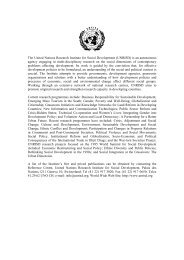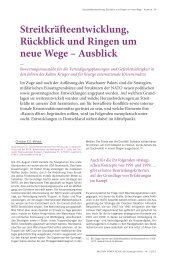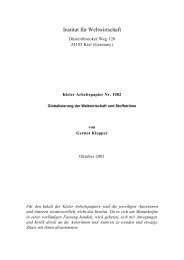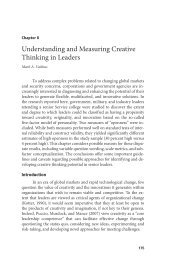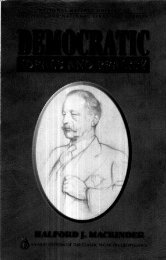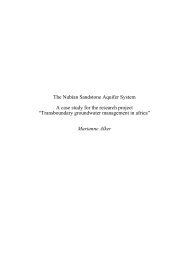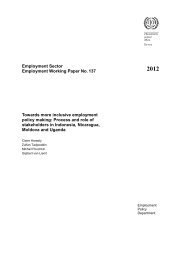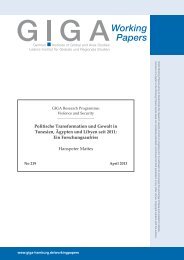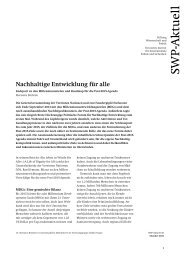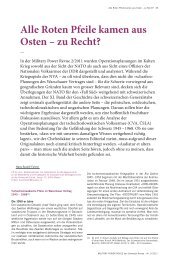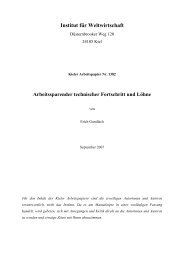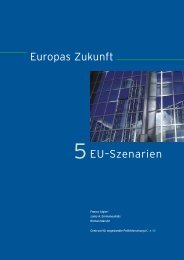Global Jihad: temi, piste di diffusione e il fenomeno del reducismo ...
Global Jihad: temi, piste di diffusione e il fenomeno del reducismo ...
Global Jihad: temi, piste di diffusione e il fenomeno del reducismo ...
Create successful ePaper yourself
Turn your PDF publications into a flip-book with our unique Google optimized e-Paper software.
1.1 The “W<strong>il</strong>l”<br />
The w<strong>il</strong>l denotes the desire, intent and w<strong>il</strong>lingness of a sub-state group to pursue,<br />
develop and deploy high impact weapons and devices.<br />
There<br />
are many variables which could affect a sub-state’s group choice as to whether<br />
to pursue the acquisition and use of NR weapons. Commonly cited influences<br />
include group motivations, target au<strong>di</strong>ence, structure and organisation, history and<br />
learning behaviour,<br />
the education level of members, the level of state support (or<br />
independent finances), intended targets and the ava<strong>il</strong>ab<strong>il</strong>ity of material. 136<br />
Recent reviews have proposed the advent of “new terrorism”, which calls into<br />
question the classical notion that terrorists are more interested in gaining an au<strong>di</strong>ence<br />
than in k<strong>il</strong>ling their potential au<strong>di</strong>ence. Scholars and experts have suggested<br />
that this<br />
mo<strong>del</strong> may only be true for secularly motivated terrorist organisations. Proponents<br />
of the “new terrorism” identify a small number<br />
of sub-state actors with a malign<br />
intent which do not appear to fit comfortably into this characterisation,<br />
inclu<strong>di</strong>ng<br />
religious fundamentalists or extremist groups. It has been argued that three other<br />
factors coalesce in such groups to separate them from their more tra<strong>di</strong>tional<br />
equivalents: a <strong>del</strong>iberate quest to acquire or develop high impact weapons; a<br />
w<strong>il</strong>lingness to accept martyrdom;<br />
and, a perception that the only “au<strong>di</strong>ence” of<br />
worth is that of a deity.<br />
Current<br />
analytical literature tends to argue that, within islamist ra<strong>di</strong>cal groups, a<br />
new<br />
mass-casualty concept has developed. This has been tied to a belief that their<br />
cause is part of a higher plan, either as a battle between ‘good’ and ‘ev<strong>il</strong>’ or as a<br />
precursor to an apocalypse, which detaches them from moral “norms” or other social<br />
constraints.<br />
136 ‘Chemical, Biological, Ra<strong>di</strong>ological, and Nuclear Terrorism: The Threat Accor<strong>di</strong>ng to the Current Unclassified<br />
Literature’, Report by Centre for Counterproliferation Research, National Defense University, 31 May 2002, p2-3,<br />
[Online]<br />
http://www.ndu.edu/centercounter/CBRN_Annotated_Bib.pdf [Last Accessed 12/04/05]<br />
216



